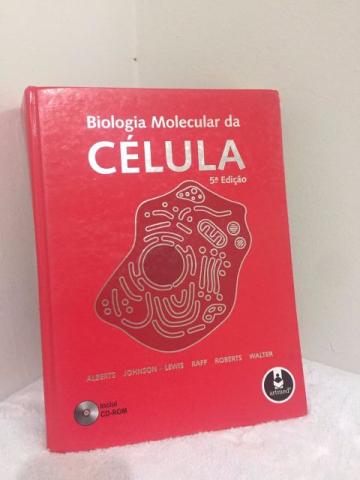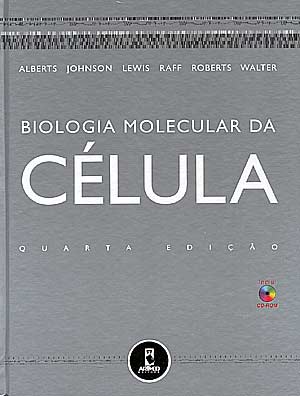Biologia Molecular Da Celula Alberts
Introduccion a la Biologia Celular / Essential Cell Biology Bruce Alberts, Dennis Bray, Karel Hopkin. Microbiology Science / Life Sciences / Molecular. Oferecendo uma excelente estrutura para o ensino e o aprendizado da biologia celular. Maps Europe Gps.
(Parte 1 de 8) The Molecular Biology of the Cell Acknowledgments Preface A Note to the Reader I. Introduction to the Cell 1. Cells and Genomes The Universal Features of Cells on Earth The Diversity of Genomes and the Tree of Life Genetic Information in Eucaryotes References 2. Cell Chemistry and Biosynthesis The Chemical Components of a Cell Catalysis and the Use of Energy by Cells How Cells Obtain Energy from Food References 3.

Proteins The Shape and Structure of Proteins Protein Function References I. Basic Genetic Mechanisms 4. DNA and Chromosomes (1 of 8) 07:37:18 The Structure and Function of DNA Chromosomal DNA and Its Packaging in the Chromatin Fiber The Global Structure of Chromosomes References 5. DNA Replication, Repair, and Recombination The Maintenance of DNA Sequences DNA Replication Mechanisms The Initiation and Completion of DNA Replication in Chromosomes DNA Repair General Recombination Site-Specific Recombination References 6. How Cells Read the Genome: From DNA to Protein From DNA to RNA From RNA to Protein The RNA World and the Origins of Life References 7. Control of Gene Expression An Overview of Gene Control DNA-Binding Motifs in Gene Regulatory Proteins How Genetic Switches Work The Molecular Genetic Mechanisms That Create Specialized Cell Types (2 of 8) 07:37:18 Posttranscriptional Controls How Genomes Evolve References I.

Manipulating Proteins, DNA, and RNA Isolating Cells and Growing Them in Culture Fractionation of Cells Isolating, Cloning, and Sequencing DNA Analyzing Protein Structure and Function Studying Gene Expression and Function References 9. Visualizing Cells Looking at the Structure of Cells in the Microscope Visualizing Molecules in Living Cells References IV. Mc Shan Down By Law. Internal Organization of the Cell 10. Membrane Structure The Lipid Bilayer Membrane Proteins References 1. Membrane Transport of Small Molecules and the Electrical Properties of Membranes Principles of Membrane Transport (3 of 8) 07:37:18 Carrier Proteins and Active Membrane Transport Ion Channels and the Electrical Properties of Membranes References 12. Intracellular Compartments and Protein Sorting The Compartmentalization of Cells The Transport of Molecules between the Nucleus and the Cytosol The Transport of Proteins into Mitochondria and Chloroplasts Peroxisomes The Endoplasmic Reticulum References 13.
Intracellular Vesicular Traffic The Molecular Mechanisms of Membrane Transport and the Maintenance of Compartmental Diversity Transport from the ER through the Golgi Apparatus Transport from the Trans Golgi Network to Lysosomes Transport into the Cell from the Plasma Membrane: Endocytosis Transport from the Trans Golgi Network to the Cell Exterior: Exocytosis References 14. Energy Conversion: Mitochondria and Chloroplasts The Mitochondrion Electron-Transport Chains and Their Proton Pumps Chloroplasts and Photosynthesis (4 of 8) 07:37:18 The Genetic Systems of Mitochondria and Plastids The Evolution of Electron-Transport Chains References 15. Cell Communication General Principles of Cell Communication Signaling through G-Protein-Linked Cell-Surface Receptors Signaling through Enzyme-Linked Cell-Surface Receptors Signaling Pathways That Depend on Regulated Proteolysis Signaling in Plants References 16. The Cytoskeleton The Self-Assembly and Dynamic Structure of Cytoskeletal Filaments How Cells Regulate Their Cytoskeletal Filaments Molecular Motors The Cytoskeleton and Cell Behavior References 17.
The Cell Cycle and Programmed Cell Death An Overview of the Cell Cycle Components of the Cell-Cycle Control System Intracellular Control of Cell-Cycle Events Programmed Cell Death (Apoptosis) Extracellular Control of Cell Division, Cell Growth, and Apoptosis (5 of 8) 07:37:18 References 18. The Mechanics of Cell Division An Overview of M Phase Mitosis Cytokinesis References V.
Cells in Their Social Context 19. Cell Junctions, Cell Adhesion, and the Extracellular Matrix Cell Junctions Cell-Cell Adhesion The Extracellular Matrix of Animals Integrins The Plant Cell Wall References 20.
Germ Cells and Fertilization The Benefits of Sex Meiosis Primordial Germ Cells and Sex Determination in Mammals Eggs Sperm Fertilization References (6 of 8) 07:37:18 21. Development of Multicellular Organisms Universal Mechanisms of Animal Development Caenorhabditis Elegans: Development from the Perspective of the Individual Cell Drosophila and the Molecular Genetics of Pattern Formation: Genesis of the Body Plan Homeotic Selector Genes and the Patterning of the Anteroposterior Axis Organogenesis and the Patterning of Appendages Cell Movements and the Shaping of the Vertebrate Body The Mouse Neural Development Plant Development References 2. Histology: The Lives and Deaths of Cells in Tissues Epidermis and Its Renewal by Stem Cells Sensory Epithelia The Airways and the Gut Blood Vessels and Endothelial Cells Renewal by Multipotent Stem Cells: Blood Cell Formation Genesis, Modulation, and Regeneration of Skeletal Muscle Fibroblasts and Their Transformations: The Connective-Tissue Cell Family Stem-Cell Engineering References 23. Cancer (7 of 8) 07:37:18 Cancer as a Microevolutionary Process The Preventable Causes of Cancer Finding the Cancer-Critical Genes The Molecular Basis of Cancer-Cell Behavior Cancer Treatment: Present and Future References 24. The Adaptive Immune System Lymphocytes and the Cellular Basis of Adaptive Immunity B Cells and Antibodies The Generation of Antibody Diversity T Cells and MHC Proteins Helper T Cells and Lymphocyte Activation References 25. Pathogens, Infection, and Innate Immunity Introduction to Pathogens Cell Biology of Infection Innate Immunity References Glossary © 2002 by Bruce Alberts, Alexander Johnson, Julian Lewis, Martin Raff, Keith Roberts, and Peter Walter.